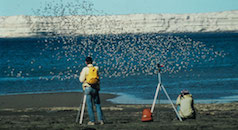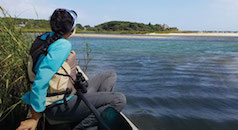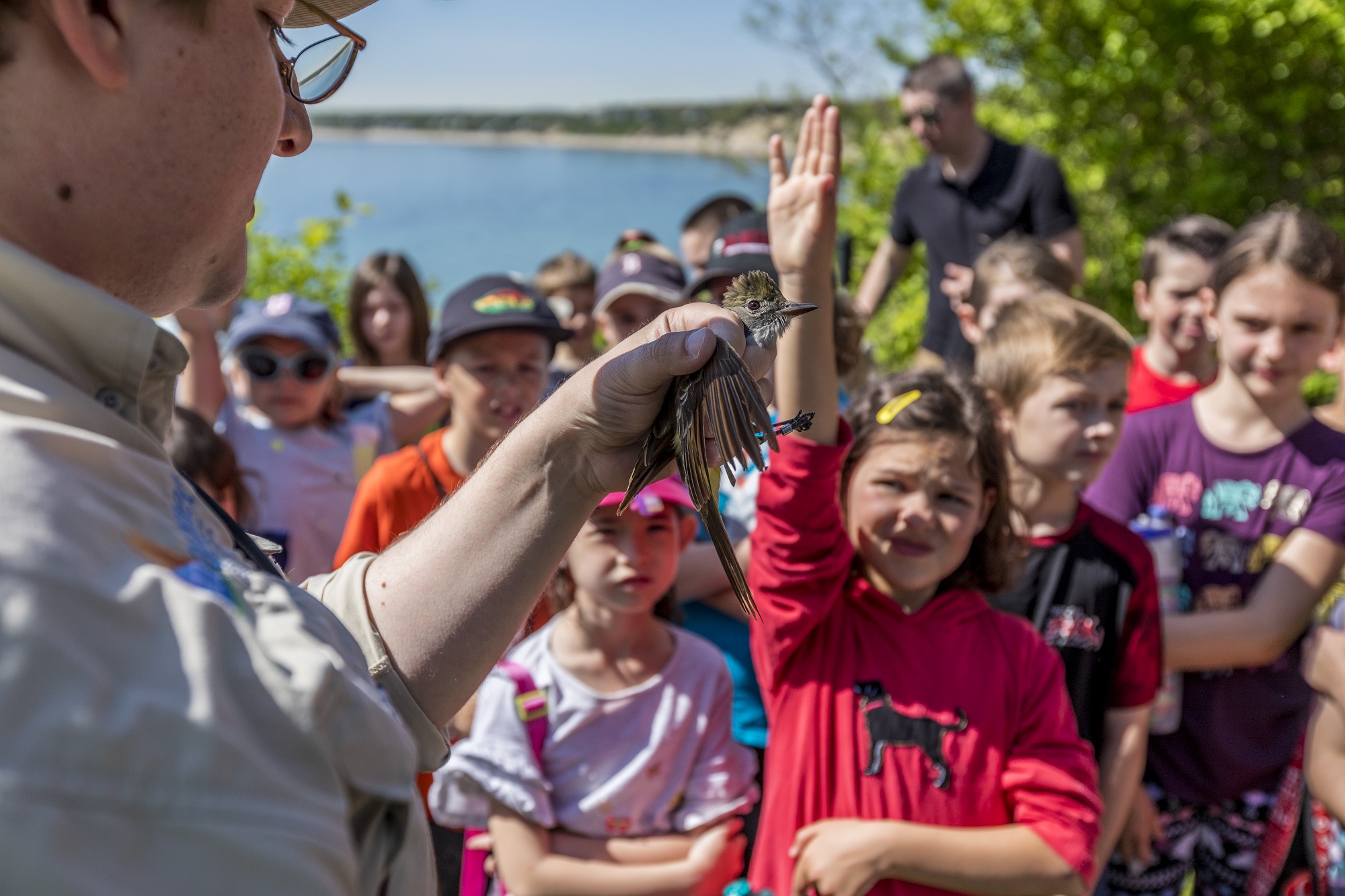Search Results

Fisheries
Manomet’s Fisheries team works to promote resilient and productive coastal ecosystems and communities through applied science and community engagement. Our work focuses on the Gulf of Maine, an area experiencing rapid climate-induced warming and immense ecological and social change. We work in partnership with coastal communities, fishers, and other industry members to co-develop climate change adaptation strategies that build greater social, ecological, and economic resilience.
NO BOUNDARIES: Our Flagship Species
The Small Sit | From Menace to Menu: Turning the Tide on Green Crabs
The European green crab is small but mighty—and not in a good way. As waters have warmed, this invasive species has wreaked havoc on east coast ecosystems from New England to Canada, threatening native shellfish, eelgrass beds, and the livelihoods of fishers. But what if this ecological disruptor could become an economic opportunity? Join Marissa McMahan, Manomet’s Senior Director of Fisheries, and Gabriela Bradt of New Hampshire Sea Grant, for a bite-sized virtual science session on how Manomet, NH Sea Grant, and partners are tracking, studying, and rethinking green crabs. Since 2018, Manomet has led one of the most consistent green crab monitoring efforts along the Maine coast, gathering data with help from researchers, students, and community scientists. This research...
Green Crabs and their Negative Impact on Coastal Habitats | 7 News Boston
DUXBURY, MASS. (WHDH) - Skip Bennett makes a living farming clams and oysters in Duxbury Bay. “We found little windows like in July, where the oysters are growing so fast,” said Bennett, Island Creek Founder. Growing fast is key because lurking at the bottom of the bay is an army of small green crabs hunting for shellfish. European Green Crabs are considered one of the “world’s most invasive species.” “They are very destructive for being so small,” said Bennett. And these small creatures are a big problem for Bennett because they feed off of soft shell clams and oysters. “They’re like potato chips and they’re just popping those things open no problem,” said Bennett. Researchers at Manomet Conservation Sciences have...
Casco Bay scientists tackle eelgrass loss
At Maine’s first seagrass summit, researchers gathered to share findings and develop a strategy for large-scale restoration. Largely hidden from sight, eelgrass, or Zostera marina, plays a vital role in coastal environments. It shields shorelines from erosion, removes nitrogen through respiration and provides habitat for dozens of juvenile species, from lobsters to bay scallops. In Maine, more than half of native eelgrass has receded, drawing scientists’ attention. Many factors have contributed to this, including stormwater pollution, warming waters and invasive green crabs munching on the grass beds. However, there are still many unknowns. Since 2021, the Collaborative for Bioregional Action Learning and Transformation’s (COBALT) Team Zostera has surveyed the remaining seagrass meadows, identified the species’ reproductive season and determined the best time...
Crabs, Quahogs, and Conservation: Fall Fisheries Update
Over the past few months, Jessie Batchelder, Manomet’s Fisheries Project Manager, has been immersed (quite literally, sometimes!) in vital research focused on protecting critical coastal ecosystems in Casco Bay and beyond. As part of a two-year grant aimed at understanding stressors on eelgrass beds—an area where staggering loss has occurred—Jessie has been working with the Casco Bay Estuary Partnership, Friends of Casco Bay and Team Zostera to understand stressors on eelgrass beds. Manomet’s role in this work has been trapping invasive green crabs to understand population differences in beds of differing status. This season marked the completion of year one, with her team gathering crucial data on green crab abundance and their impact on fragile eelgrass habitats. In addition to...
New Fishing Opportunities: Invasive, Emerging and Underutilized Species
Fishing communities are being disproportionately impacted by climate change and are incredibly vulnerable in the Gulf of Maine where there is low diversity of fisheries resources and limited access to those resources. We are working to develop new fishing opportunities that support resilient coastal communities and ecosystems by targeting invasive, emerging, and underutilized species.
Participatory Mudflat Mapping
Shellfish have immense cultural, social, ecological, and economic importance for coastal communities and have been harvested and stewarded by the Wabanaki people (the collective name for the four Maine Indian tribes: the Maliseet, Micmac, Penobscot, and Passamaquoddy) for thousands of years. In Maine, shellfisheries are co-managed between towns and the state, and commercial harvesters play a vital role in stewarding and sustaining mudflat ecosystems. These intertidal ecosystems are experiencing significant change due to a number of factors: invasive green crab predation, as well as warming waters, sea level rise, and increased storm activity due to climate change. The high cost of real estate along the Maine coast is also having an impact on how much (or how little) of the...
Addressing Invasives: How we can prepare & adapt to our changing ecosystems
Join Marissa McMahan, Ph.D., Manomet Conservation Sciences' Senior Director of Fisheries, for a presentation in conjunction with other guest speakers addressing invasive species in Maine, and how local communities can adapt to changing ecosystems. Marissa will dive into the history of the invasive European Green Crab, their impacts on native species and habitats, and the innovative ways people are dealing with this unwelcome pest. Please see the flyer below for more information:
Understanding the rise of blue crabs in the Gulf of Maine
The Gulf of Maine's warming waters are making conditions just right for this historically mid-Atlantic resident to set up shop. How will their emergence affect Maine's fishing industry, and what are community members doing to help scientists measure their impact? By Rafeed Hussain Beautiful. Savory. Swimmer. That’s what the scientific name for Atlantic blue crabs aptly translates to. These delectable decapods are quintessential to the fabric of the mid-Atlantic seafood scene, culture, and economy. In fact, about half of all blue crabs sold in the U.S. come from Chesapeake Bay. But climate change may be redefining what’s considered home territory for blue crabs—and for the North Atlantic fishing communities whose livelihoods depend on the Gulf of Maine ecosystem. “Historically, outside...



